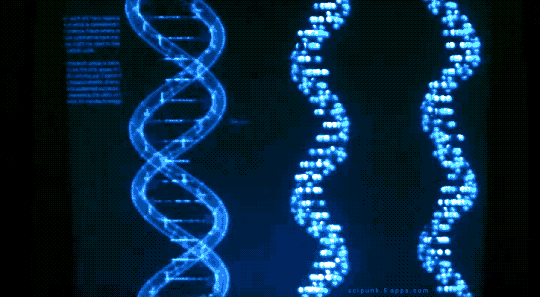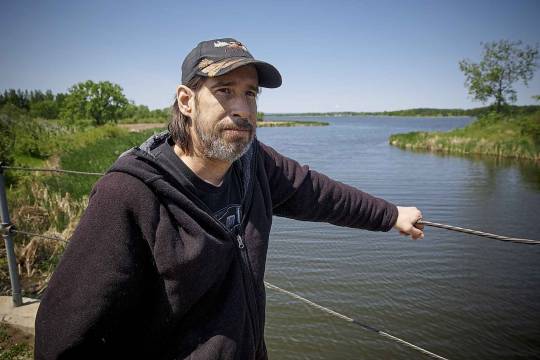Text
Brutal Murder & Wrongful Conviction: Kyle Unger

Nineteen-year-old, Kyle Unger, and seventeen-year-old, co-accused, Timothy Houlahan, were convicted of the first-degree murder of sixteen-year-old, Brigette Grenier. She was brutally murdered on June 22, 1990, at a concert in Roseisle, Manitoba. Grenier was last seen with Houlahan, and supposedly left the concert with her, and a little while after that Kyle Unger supposedly left his friend for a bit. When Unger returned, he returned without any bruises, or scratches, or any indication of suspicious activity, however, his Houlahan’s condition was different.
On June 23, 1990, Grenier’s body was found, she had been sexually assaulted, and strangled to death. Timothy Houlahan, who had many reasons to be guilty, and convicted, was questioned the day of her death, however, no statement was taken from him because he was young, with no parents around. Nonetheless, Houlahan claimed that the blood on his chin, and shoes, were the result of him getting attacked by a man who seemed to fit the description of Kyle Unger. The RCMP believed that Unger was guilty, and set out to build supporting evidence to prove his guilt, which is also known as tunnel vision (willful blindness of police).
The reasons behind Unger’s conviction may have been aggravated by the claims of a jailhouse informant who made many incriminating statements about Unger, as well as, the fact that Unger falsely confessed to the murder during an undercover (Mr. Big) investigation. Nevertheless, the only piece of evidence linking Kyle Unger to Brigitte Grenier’s crime scene was a single strand of scalp hair, identified on the victim’s sweatshirt and was said to be uniform with the hair sample that Unger provided to the police. The sample was further tested by an RCMP forensics technician, who used hair microscopy to determine the crime scene, to which Kyle Unger maintained his innocence.
youtube
#wrongfullyconvicted#wrongfully accused#tunnel vision#biased#willful ignorance#brutal murder#accused#mr big#victim#evidence#technician#microscope#testing#forensics#labratory#rcmp#manitoba#innocent until proven guilty#Youtube
0 notes
Text
Hair microscopy

Hair microscopy and hair evidence, at one time, were a widely used form of evidence in forensic science investigations. It is an easily transferable form of evidence that is used in casework. Hair microscopy is the examination of human hairs, conducted in a forensic laboratory, through the use of light microscopy. It involves two steps, (1) the identification, (2) examination of the questioned or known hair sample. However, hair microscopy and the value of hair evidence are under question for its level of accuracy and adequacy in crime scene investigations.

3 notes
·
View notes
Text
Ethical issues with Kyle Unger's conviction

Hair microscopy is currently argued and criticized as an invalid and unreliable source of evidence, due to its increasingly high number of error rates in hair analysis cases during forensic investigations. It is believed that approximately sixty-five of the trials examined involved a form of microscopic hair analysis, in which, twenty-five or thirty-eight percent had been wrongly convicted. Forensic examiners have now indicated that hair microscopy has been the cause of many error rates, thus the perceived value of hair evidence has been deducted.
During Unger’s trial in the 1990s, hair microscopy was accepted as a science and the hair samples he provided were taken before the development of new DNA testing technologies. The recent advent of DNA testing has exonerated many wrongfully convicted people due to inaccurate or invalid forensic testing procedures, under which, hair microscopy falls. Kyle Unger’s case was a miscarriage of justice, which was neglected without proper investigation. The single strand of hair is the only piece of physical evidence connecting Kyle Unger to the crime scene.
After many trials, and Kyle Unger maintaining his innocence in April of 2003, under Deputy Attorney General Bruce MacFarlane, he was proved innocent. The hair sample was retested using proper DNA testing methods, technologies, and found not to have belonged to Kyle Unger. Due to an error of hair microscopy in forensic analysis, Unger spent 19 years of his life in contrition for a crime he did not commit, to which he was only fully acquitted on October 23, 2009. Thus proving why hair microscopy is an unreliable, invalid, testing method, and should not be used. It led to a miscarriage of justice, of an innocent man.

0 notes
Text
Unhealed wounds and a continued battle for justice

Even though Kyle Unger was acquitted, many people in Roseisle continued to believe that he is the killer of Brigitte Grenier, due to a careless mistake of the justice system. He lost his twenties and early thirties in jail, and will never get those fourteen jail years back. He received no compensation for the nineteen years he suffered the guilt of a crime he did not commit. The undercover Mr. Big investigation was coercion and was unjust to Unger.
On September 21, 2011, Unger sued a $14.5 million lawsuit on all the RCMP and related officers, who were involved in his wrongful conviction, prior to which the RCMP and attorney general’s office refused to take responsibility. Instead, they blamed Kyle Unger for having committed the offence in the first place.
Regardless of the compensation, or any benefits Unger will receive, nothing can heal the injustice that he suffered, all because of a biased and careless mistake. This case comes to show how forensic testing methods need to be accurate and validated, and carefully performed, and how a minor error in forensic testing, due to tunnel vision, or bias, can cost an individual their life. These miscarriages need to be minimized at all costs.


0 notes
Text
The Brigette Grenier Affair

The Brigitte Grenier Affair is an episode (Season 7, Episode 1) of the TV series, Eaux troubles du crime, this particular episode focuses on and re-enacts the murder and investigation of Brigitte Grenier, including both Kyle Unger, and Timothy Houlahan. Although this may just be a TV episode, Unger’s name will go down in history as the possible killer of Brigitte Grenier.
0 notes
Text
Recommendation 1: Use multiple methods of testing to back up claim

To prevent future miscarriages, similar to that of Kyle Unger, forensic scientists should have to comply with this recommendation that they must use multiple methods of testing to back up a claim, or prior to convicting someone. Like hair microscopy, there are many other types of testing methods that may yield false positives, or may not be sufficient or accurate testing methods. Utilizing multiple testing methods during an investigation could prevent this careless mistake.
As many new testing methods are being uncovered each year, it is hard to be certain which method would be most accurate to use during each investigation, and which would provide the best and most accurate results. Therefore, the more methods and testing that is performed, the more precision can be guaranteed.
Hair microscopy is an invalid testing method, and should not be used during forensic investigations, it was only in the light of new DNA testing technologies that many innocent individuals, like Kyle Unger, have been exonerated due to the inconsistencies of hair microscopy. Although the use of hair microscopy has been minimized, forensic scientists should continue to refrain from using it. Following this recommendation would most definitely target the root cause of this miscarriage of justice. Perhaps, if the forensic investigators in Unger’s case utilized multiple testing methods before convicting him, they might have realized his innocence a long time ago.
1 note
·
View note